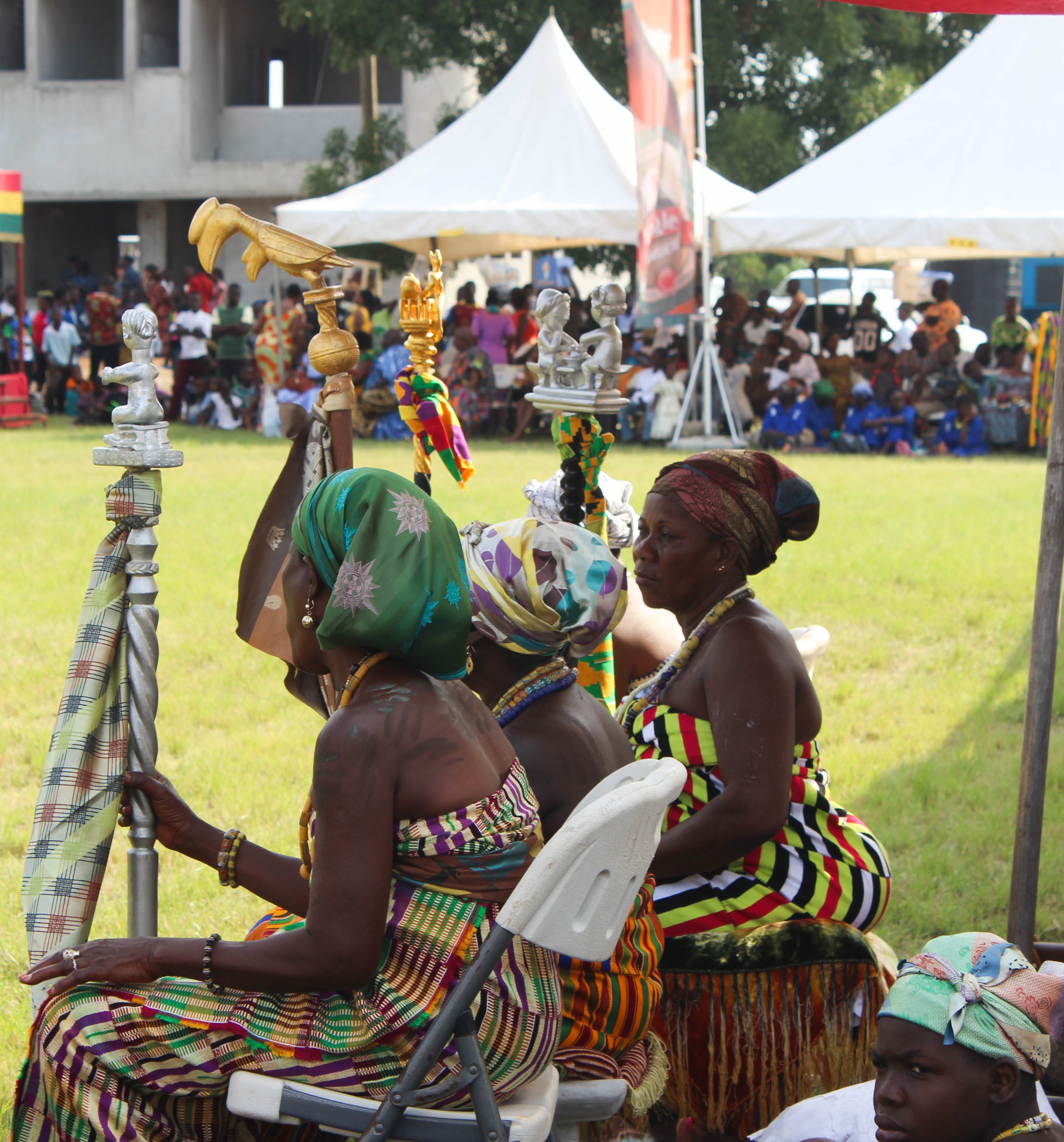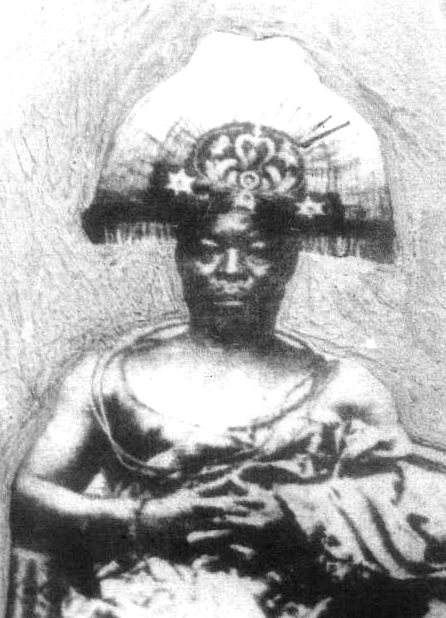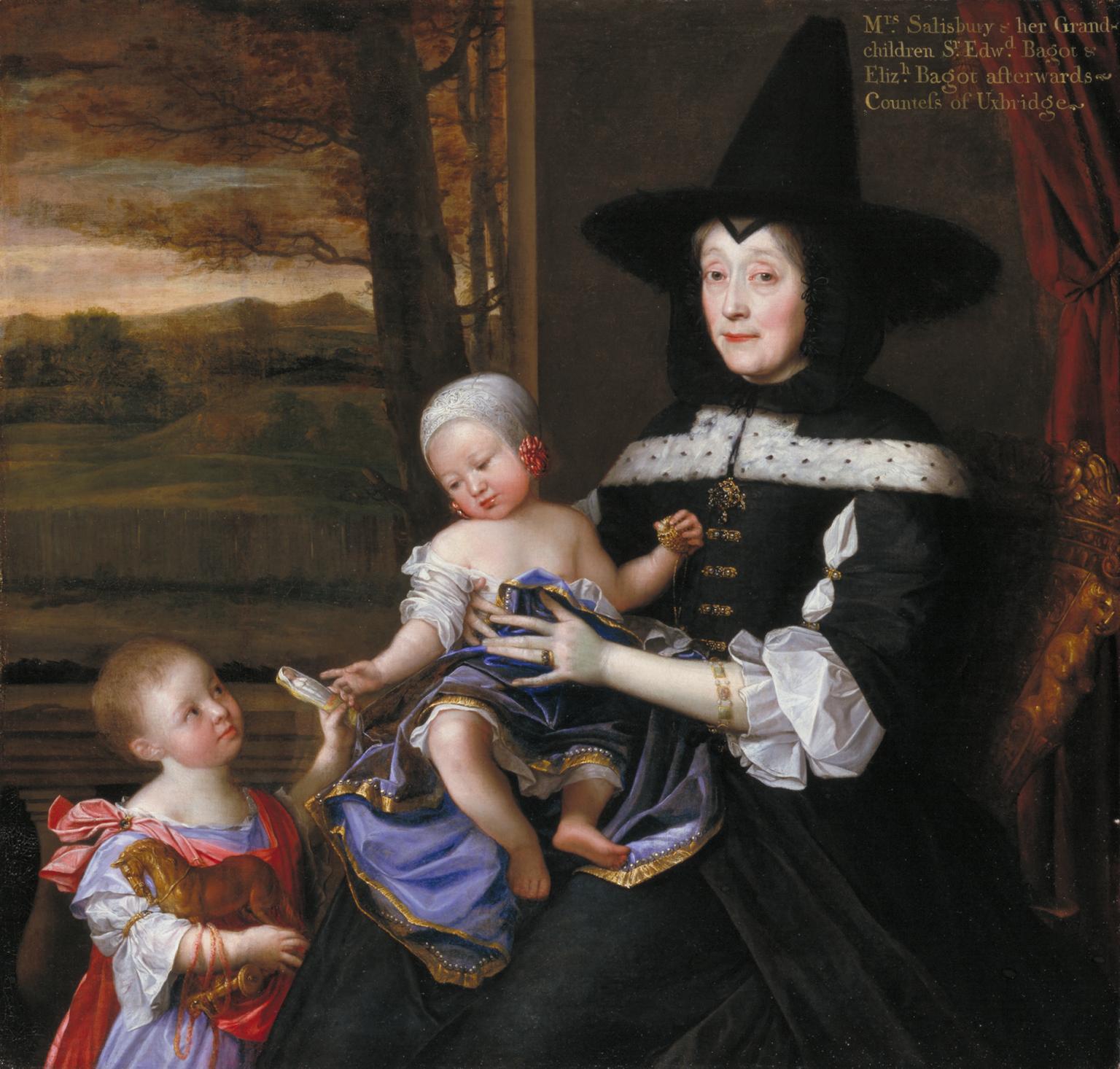|
Ukpe-okhue
The ukpe-okhue (Edo for "parrot's beak") is a crown traditionally worn by the ''Iyoba'' (queen mother) of the Oba of Benin. It is formed of a snood-like net of precious coral beadwork, using ''ileke'' ("royal") cylindrical beads. This type of crown was originated, and first worn, by the original queen mother Idia, the first woman granted the privilege to wear ''ileke'' beads. Named after a parrot's beak, it is a pointed hat Pointed hats have been a distinctive item of headgear of a wide range of cultures throughout history. Although often suggesting an ancient Indo-European tradition, they were also traditionally worn by women of Lapland, the Japanese, the Mi'kmaq p ..., with its shape somewhat resembling a Phrygian cap with its point curving forward. Gallery Image:Afrikaabteilung in Ethnological Museum Berlin 29.JPG File:Queen Mother Pendant Mask- Iyoba MET DP231460.jpg References {{reflist Crowns (headgear) Benin Court Art African queen mothers Beadwork ... [...More Info...] [...Related Items...] OR: [Wikipedia] [Google] [Baidu] |
Idia
Idia was the mother of Esigie, who reigned as Oba (king) of the Edo people from 1504 to 1550 Historians do know that Idia was alive during the Idah war (1515-1516) because she played a role that led to a great Benin victory. It has been argued that Idia, therefore, was the true power behind the throne of her son. She played a significant role in the rise and reign of her son, being described as a great warrior who fought relentlessly before and during her son's reign as the Oba (king) of the Edo people. Queen Idia was instrumental in securing the title of Oba for her son Esigie following the death of his father Oba Ozolua. To that end, she raised an army to fight off his brother Arhuaran who was supposed to be the Oba by right and tradition but was subsequently defeated in battle. Esigie’s mother became the 17th Oba of Benin. Idia first entered the royal household because Ozolua, the Oba from 1483 until 1514 saw her dance, and after the dance, he wanted to make Idia, his ... [...More Info...] [...Related Items...] OR: [Wikipedia] [Google] [Baidu] |
Edo Language
Edo (with diacritics, ), colloquially called Bini (Benin), is a language spoken in Edo State, Nigeria. It is the native language of the Edo people and was the primary language of the Benin Empire and its predecessor, Igodomigodo. Distribution Most of the Edo language-speakers live in Edo State, Nigeria. A smaller number of speakers are also found in Delta State and Ondo State and in other parts of Nigeria. Edo is an Edoid language. This languages are also spoken in Rivers State and Bayelsa State, Nigeria. Phonology Vowels There are seven vowels, , all of which may be long or nasal, and three tones. Consonants Edo has a rather average consonant inventory for an Edoid language. It maintains only a single phonemic nasal, , but has 13 oral consonants, and the 8 stops, which have nasal allophones such as , and nasalized allophones before nasal vowels. The three rhotics have been described as voiced and voiceless trills as well as a lax English-type approximant. However, ... [...More Info...] [...Related Items...] OR: [Wikipedia] [Google] [Baidu] |
Parrot
Parrots, also known as psittacines (), are birds of the roughly 398 species in 92 genera comprising the order Psittaciformes (), found mostly in tropical and subtropical regions. The order is subdivided into three superfamilies: the Psittacoidea ("true" parrots), the Cacatuoidea (cockatoos), and the Strigopoidea (New Zealand parrots). One-third of all parrot species are threatened by extinction, with higher aggregate extinction risk ( IUCN Red List Index) than any other comparable bird group. Parrots have a generally pantropical distribution with several species inhabiting temperate regions in the Southern Hemisphere, as well. The greatest diversity of parrots is in South America and Australasia. Characteristic features of parrots include a strong, curved bill, an upright stance, strong legs, and clawed zygodactyl feet. Many parrots are vividly coloured, and some are multi-coloured. Most parrots exhibit little or no sexual dimorphism in the visual spectrum. They form the most ... [...More Info...] [...Related Items...] OR: [Wikipedia] [Google] [Baidu] |
Crown (headgear)
A crown is a traditional form of head adornment, or hat, worn by monarchs as a symbol of their power and dignity. A crown is often, by extension, a symbol of the monarch's government or items endorsed by it. The word itself is used, particularly in Commonwealth countries, as an abstract name for the monarchy itself, as distinct from the individual who inhabits it (that is, ''The Crown''). A specific type of crown (or coronet for lower ranks of peerage) is employed in heraldry under strict rules. Indeed, some monarchies never had a physical crown, just a heraldic representation, as in the constitutional kingdom of Belgium, where no coronation ever took place; the royal installation is done by a solemn oath in parliament, wearing a military uniform: the King is not acknowledged as by divine right, but assumes the only hereditary public office in the service of the law; so he in turn will swear in all members of "his" federal government''. Variations * Costume headgear imitati ... [...More Info...] [...Related Items...] OR: [Wikipedia] [Google] [Baidu] |
Queen Mothers (Africa)
Queen mother (also Queenmother) is a term used to describe certain female traditional rulers in African cultures. Though there is no general description of a "queen mother", as their roles have varied by society, political context, and culture, they generally play an important role in local government and "wield social power and influence." They are thus an important part of social, political, and cultural institutions across the African continent: the Akan, for example, recognize them as important local political actors and often trace inheritance through them in a matrilineal fashion; whereas in Uganda, the term may be used to describe women who ruled outright. The amount of power queen mothers currently hold has been diminished since pre-colonial times, though the 21st century has seen their influence grow in certain contexts. Many are members of the African Queens and Women Cultural Leaders Network, a voluntary organization. History Queen mothers were once important polit ... [...More Info...] [...Related Items...] OR: [Wikipedia] [Google] [Baidu] |
Oba Of Benin
The Oba of Benin is the traditional ruler and the custodian of the culture of the Edo people and all Edoid people. The then Kingdom of Benin (not to be confused with the modern-day and unrelated Republic of Benin, which was then known as Dahomey) has been and continues to be mostly populated by the Edo (also known as Benin ethnic group). In 1897, a British military force, of approximately 1,200 men, under the command of Sir Harry Rawson, mounted the Benin punitive Expedition. The force dispatched in retaliation to the ambush of a British party, at Ugbine village near Gwato, on the 4th January 1897, by a group of Benin soldiers, acting without orders from the Oba; the ambush had led to the deaths of all but two of the British party. The British force captured the capital of the Kingdom of Benin, sacking and burning the city while forcing the Oba of Benin, Ovonramwen, into a six-month exile. The expeditionary force consisted of both indigenous soldiers and British officers b ... [...More Info...] [...Related Items...] OR: [Wikipedia] [Google] [Baidu] |
Snood (headgear)
A snood () is a type of traditionally female headgear designed to hold the hair in a cloth or yarn bag. In the most common form, the headgear resembles a close-fitting hood worn over the back of the head. It is similar to a hairnet, but snoods typically have a looser fit, a much coarser mesh, and noticeably thicker yarn. A tighter-mesh band may cover the forehead or crown, then run behind the ears, and under the nape of the neck. A sack of sorts dangles from this band, covering and containing the fall of long hair gathered at the back. A snood sometimes was made of solid fabric, but more often of loosely knitted yarn or other net-like material. Historically (and in some cultures still in use today) a small bag of fine thread—netted, tatted, knitted, crocheted, or knotted (see macramé)—enclosed a bob of long hair on the back of the head or held it close to the nape. Beard snood Another similar garment which is also referred to as a snood is used to cover facial hair such as ... [...More Info...] [...Related Items...] OR: [Wikipedia] [Google] [Baidu] |
Precious Coral
Precious coral, or red coral, is the common name given to a genus of marine corals, ''Corallium''. The distinguishing characteristic of precious corals is their durable and intensely colored red or pink-orange skeleton, which is used for making jewelry. Habitat Red corals grow on rocky seabottom with low sedimentation, typically in dark environments—either in the depths or in dark caverns or crevices. The original species, ''C. rubrum'' (formerly ''Gorgonia nobilis''), is found mainly in the Mediterranean Sea. It grows at depths from 10 to 300 meters below sea level, although the shallower of these habitats have been largely depleted by harvesting. In the underwater caves of Alghero, Sardinia (the "Coral Riviera") it grows at depth from 4 to 35 meters. The same species is also found at Atlantic sites near the Strait of Gibraltar, at the Cape Verde Islands and off the coast of southern Portugal. Other ''Corallium'' species are native to the western Pacific, notably arou ... [...More Info...] [...Related Items...] OR: [Wikipedia] [Google] [Baidu] |
Beadwork
Beadwork is the art or craft of attaching beads to one another by stringing them onto a thread or thin wire with a sewing or beading needle or sewing them to cloth. Beads are produced in a diverse range of materials, shapes, and sizes, and vary by the kind of art produced. Most often, beadwork is a form of personal adornment (e.g. jewelry), but it also commonly makes up other artworks. Beadwork techniques are broadly divided into several categories, including loom and off-loom weaving, stringing, bead embroidery, bead crochet, bead knitting, and bead tatting. Ancient beading The art of creating and utilizing beads is ancient, and ostrich shell beads discovered in Africa can be carbon-dated to 10,000 BC. Faience beads, a type of ceramic created by mixing powdered clays, lime, soda, and silica sand with water until a paste forms, then molding it around a stick or straw and firing until hard, were notably used in ancient Egyptian jewelry from the First Dynasty (beginning in t ... [...More Info...] [...Related Items...] OR: [Wikipedia] [Google] [Baidu] |
Pointed Hat
Pointed hats have been a distinctive item of headgear of a wide range of cultures throughout history. Although often suggesting an ancient Indo-European tradition, they were also traditionally worn by women of Lapland, the Japanese, the Mi'kmaq people of Atlantic Canada, and the Huastecs of Veracruz and Aztec (e.g., as illustrated in the Codex Mendoza). The Kabiri of New Guinea have the ''diba'', a pointed hat glued together. History The conical hat is known to have existed as early as the Bronze Age in the Middle East, Eurasia, and Central Europe. Conical hats were recorded in ancient Egypt, especially when depicting Osiris and pharaohs, who emulated Osiris' iconography. Conical hats were also recorded by many Indo-European civilizations. Golden hats have been recorded in burial sites in Central Europe. The Scythians of the Eurasian steppes were noted for having pointed hats, often mentioned by other civilizations, such as in the DNa inscription on the tomb of Darius the Grea ... [...More Info...] [...Related Items...] OR: [Wikipedia] [Google] [Baidu] |
Crowns (headgear)
A crown is a traditional form of head adornment, or hat, worn by monarchs as a symbol of their power and dignity. A crown is often, by extension, a symbol of the monarch's government or items endorsed by it. The word itself is used, particularly in Commonwealth countries, as an abstract name for the monarchy itself, as distinct from the individual who inhabits it (that is, ''The Crown''). A specific type of crown (or coronet for lower ranks of peerage) is employed in heraldry under strict rules. Indeed, some monarchies never had a physical crown, just a heraldic representation, as in the constitutional kingdom of Belgium, where no coronation ever took place; the royal installation is done by a solemn oath in parliament, wearing a military uniform: the King is not acknowledged as by divine right, but assumes the only hereditary public office in the service of the law; so he in turn will swear in all members of "his" federal government''. Variations * Costume headgear imitati ... [...More Info...] [...Related Items...] OR: [Wikipedia] [Google] [Baidu] |






